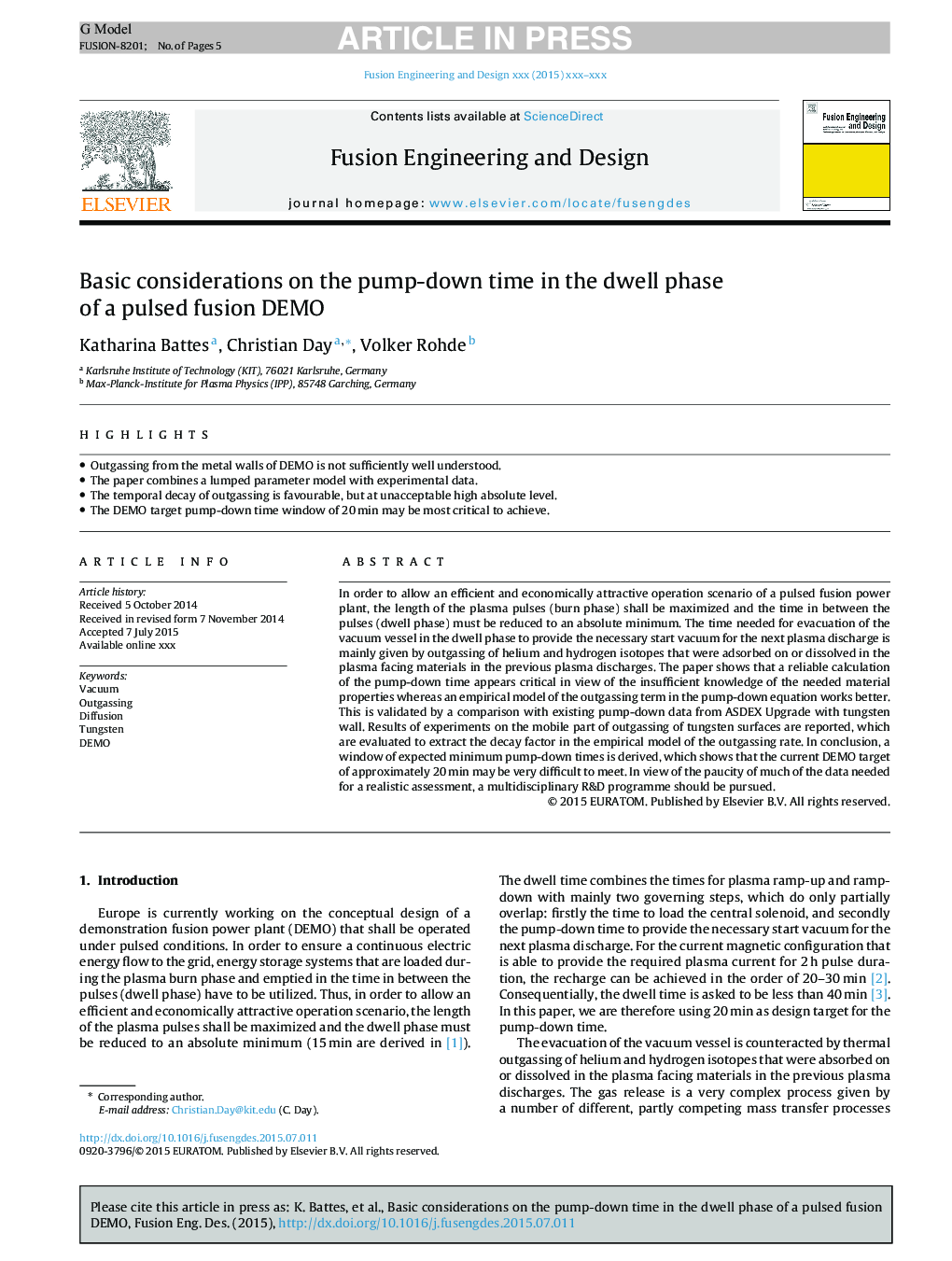| Article ID | Journal | Published Year | Pages | File Type |
|---|---|---|---|---|
| 6745900 | Fusion Engineering and Design | 2015 | 5 Pages |
Abstract
In order to allow an efficient and economically attractive operation scenario of a pulsed fusion power plant, the length of the plasma pulses (burn phase) shall be maximized and the time in between the pulses (dwell phase) must be reduced to an absolute minimum. The time needed for evacuation of the vacuum vessel in the dwell phase to provide the necessary start vacuum for the next plasma discharge is mainly given by outgassing of helium and hydrogen isotopes that were adsorbed on or dissolved in the plasma facing materials in the previous plasma discharges. The paper shows that a reliable calculation of the pump-down time appears critical in view of the insufficient knowledge of the needed material properties whereas an empirical model of the outgassing term in the pump-down equation works better. This is validated by a comparison with existing pump-down data from ASDEX Upgrade with tungsten wall. Results of experiments on the mobile part of outgassing of tungsten surfaces are reported, which are evaluated to extract the decay factor in the empirical model of the outgassing rate. In conclusion, a window of expected minimum pump-down times is derived, which shows that the current DEMO target of approximately 20Â min may be very difficult to meet. In view of the paucity of much of the data needed for a realistic assessment, a multidisciplinary R&D programme should be pursued.
Related Topics
Physical Sciences and Engineering
Energy
Energy Engineering and Power Technology
Authors
Katharina Battes, Christian Day, Volker Rohde,
